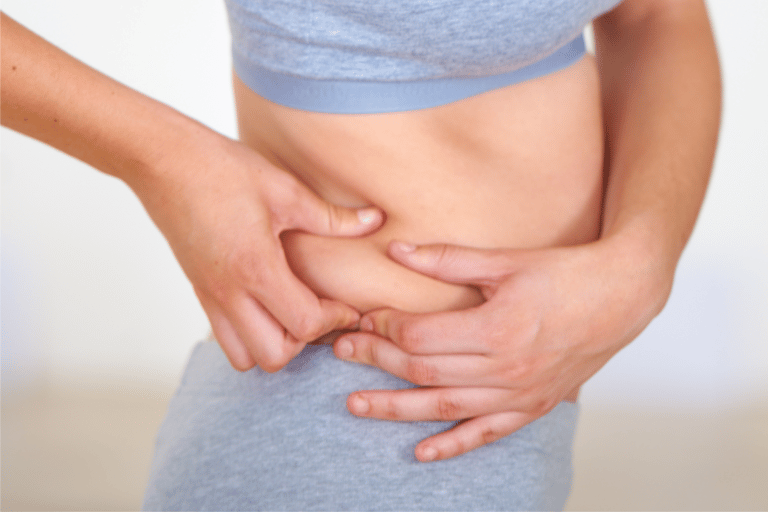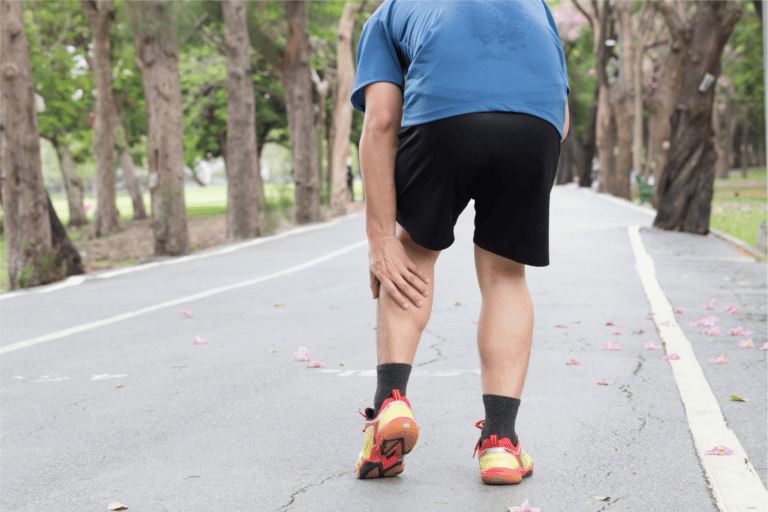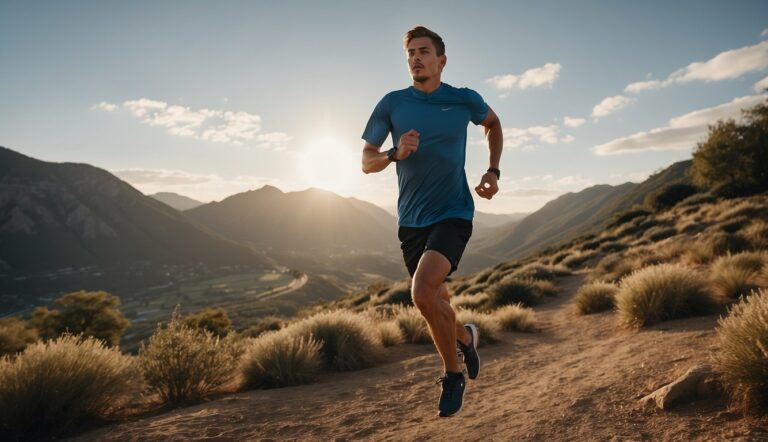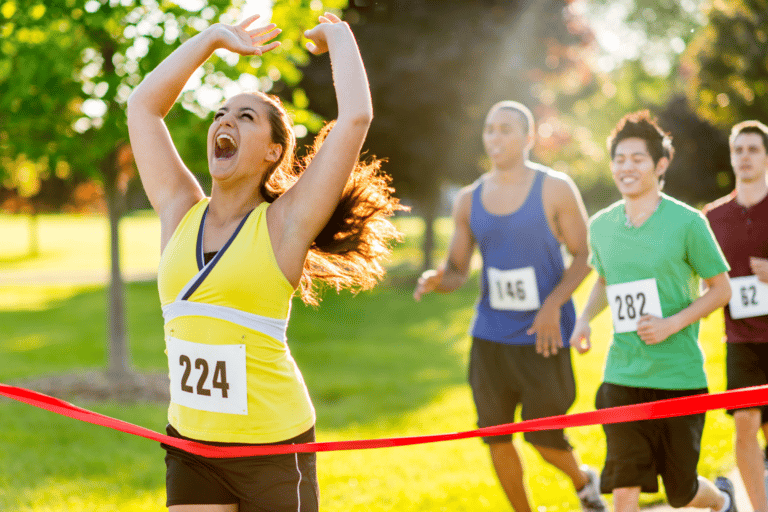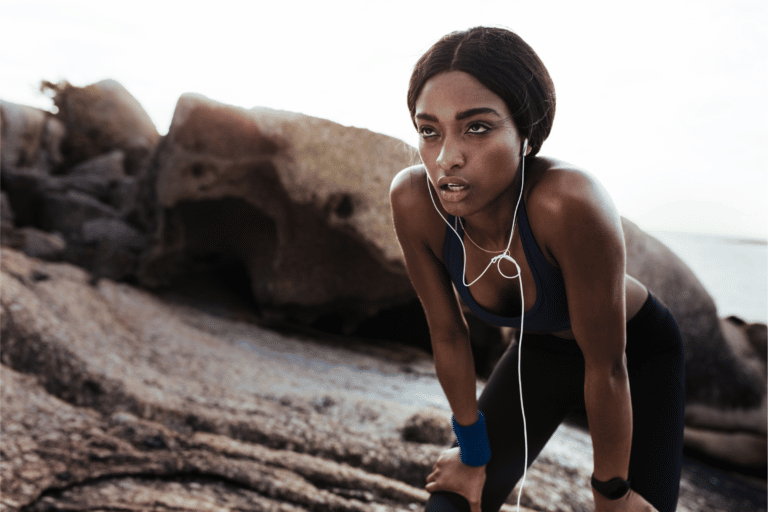Why Does Running After Eating Cause Cramps? (3 Simple Solutions)
Life can be busy. When you find yourself having to squeeze a run in right after breakfast, lunch, or dinner, you may experience cramps that you otherwise wouldn’t. This can be a painful, yet effective reminder to prepare your body fully for aerobic exercise such as running or swimming. But why does running after eating cause cramps?
Running after eating causes cramps because the exercise diverts blood flow that would normally be used to aid in digestion. Depending on the type of meal, you should wait 3-4 hours before going on a run. If you need to eat before you run, try a light snack such as carrots, celery, or apple sauce instead of a full meal and start with a slower pace.
Let’s take a closer look at the cause-and-effect relationship between eating before a run, and cramping symptoms.
Why do you cramp when you run after eating?
Different from muscle cramps, a cramping stomach while running could point to a number of different causes.
You may experience cramping after running because of:
- Runner’s stomach
- Gastrointestinal ischemia (lack of blood flow to the digestive tract)
- Poor hydration
- Oxygen deprivation
You shouldn’t go running after a large meal for the same reason you shouldn’t go swimming: the exertion is likely to cause cramping and intestinal distress because the increased blood flow is actually diverting blood necessary for digestion.
Overall, the more time you can put in between your last snack and the start of your run, the better in most cases. It’s very important to allow your body to enter into the digestion process without interruption.
Digestion in its entirety takes 2-5 days to run its course completely. This means that your plans to run 15 minutes after a meal will probably interrupt the process at some of its most crucial points. Failure to allow your body at least a couple of hours to process the food you’ve eaten can result in more than just cramps. You could end up developing indigestion and esophageal issues as well as consequences on the other end of the digestive process like diarrhea.
What is a runner’s stomach?
Runner’s stomach is a bit of a catch-all phrase to describe a number of negative symptoms experienced by avid runners, centering around the digestive system.
Symptoms of runner’s stomach include bloating, cramping, upset stomach, and diarrhea, especially during and after long runs. It can be caused by a number of factors, but some common ones include lack of blood flow to the abdomen, changes in the levels of gut hormones, or movement of food inside the stomach or intestines.
The fact that these symptoms are quite common among runners indicates there is something inherent in the sport of long-distance running that interrupts the normal digestive process.
Runners should keep this in mind before deciding to run right after consuming a meal.
Does exercising after eating always cause cramps?
While running right after a big meal is not ever a good idea, there are ways to avoid running on an empty stomach.
Running after eating doesn’t always cause cramps. A light snack such as a banana, a small bag of pretzels, or a few vegetables like celery and carrots will not have the negative impact on your running experience that a 14 oz Porterhouse steak might have.
With that being said, here is a list of some foods you might be able to munch on before going out for a run:
- Apple sauce
- Avocado
- Banana
- Berries
- Carrots
- Celery
None of these foods should be eaten in excess, but a light snack consisting of one or more of the foods on this list should not cause excessive cramping due to their being easily digestible.
A small snack such as the ones listed above can be eaten 30-60 minutes before running.
In fact, some athletes may experience cramps due to a phenomenon known as underfueling. Underfueling hypothesizes that poor nutrition and insufficient caloric intake before runs can also lead to runner’s stomach.
How long should you wait after a meal before running?
There’s no hard and fast amount of time to wait to go running after your meal, but there are some helpful guidelines.
As a general rule of thumb, it’s best to wait 3-4 hours after a large meal before running, but this can vary. It really depends on the amount and types of food consumed.
In fact, some light snacking before a run may even improve your running experience and results. Certain amino acids and carbohydrates actually have the greatest impact on muscle development if ingested immediately before a workout or run. Other foods that are heavier in carbohydrates or fats should be consumed well before an anticipated run.
How do you prevent cramps when running after eating?
The first, and most obvious way to prevent cramps when running after eating is to wait. However, if you find yourself running out of time, the following tips might help mitigate the likelihood of experiencing negative symptoms.
To prevent cramps when running after eating, you should:
- Eat small portions
- Eat light foods
- Slow your pace
Let’s take a look at each of these tips and see how they can help maximize your run.
Eat small portions
If you know you will be running immediately after a meal, try to eat smaller portions.
Due to the fact that it takes 6-8 hours for food to pass from your stomach, through your small intestine, large portion sizes can really put a person down for the count.
Smaller portions, instead, will pass through the digestive system relatively faster. They will also be lighter on the stomach, decreasing the likelihood of cramping.
Eat light foods
This one is fairly self-evident as well, but it is important that the foods you choose to eat before a run are not extremely dense or heavy.
A nice summer salad with grilled chicken, for instance, will sit much more comfortably on a runner’s stomach than a steaming plate of cheesy, beefy lasagna. If you have the ability to select the menu, make sure to choose a meal that includes vegetables and proteins.
Slow your pace
The faster the pace you’re running at, the more blood will be required to flow out to your muscles, which will in turn cause cramping in the abdomen.
If you’re worried about cramping before a run, begin with a slower pace. If that doesn’t work, and you find yourself beginning to cramp, take a quick breather and simply walk until the blood flow returns to your abdomen and the pain subsides.
How do you get rid of stomach cramps while running?
If you already find yourself cramping mid-run, your options may be limited when it comes to strategies to get rid of your stomach cramps.
You can help relieve stomach cramps while running by:
- Slowing your pace until the throbbing subsides
- Pressing two fingers into your abdomen and holding until pain goes away
- Practicing deep diaphragm breathing, inhaling and exhaling completely.

